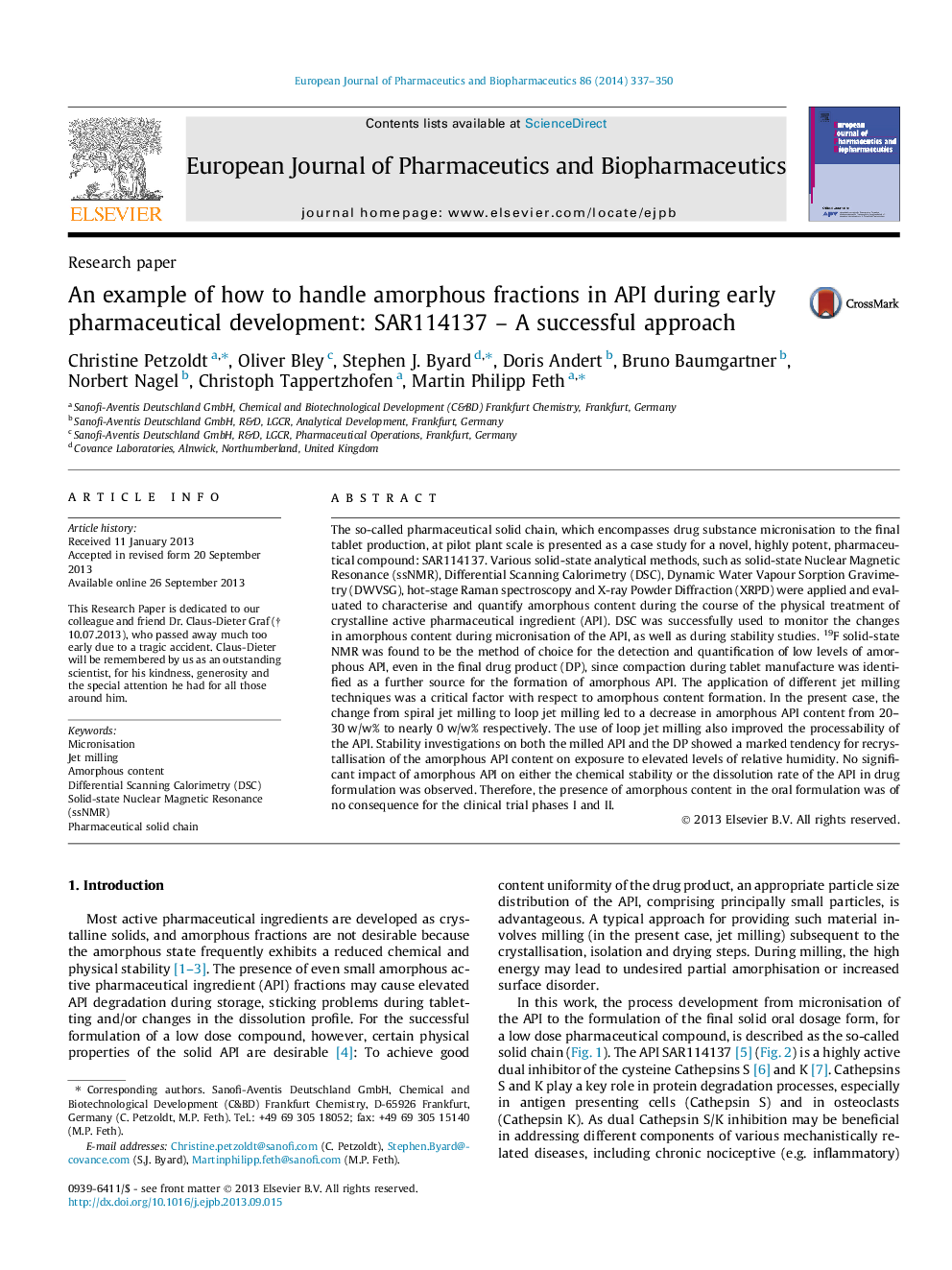| Article ID | Journal | Published Year | Pages | File Type |
|---|---|---|---|---|
| 8413963 | European Journal of Pharmaceutics and Biopharmaceutics | 2014 | 14 Pages |
Abstract
The so-called pharmaceutical solid chain, which encompasses drug substance micronisation to the final tablet production, at pilot plant scale is presented as a case study for a novel, highly potent, pharmaceutical compound: SAR114137. Various solid-state analytical methods, such as solid-state Nuclear Magnetic Resonance (ssNMR), Differential Scanning Calorimetry (DSC), Dynamic Water Vapour Sorption Gravimetry (DWVSG), hot-stage Raman spectroscopy and X-ray Powder Diffraction (XRPD) were applied and evaluated to characterise and quantify amorphous content during the course of the physical treatment of crystalline active pharmaceutical ingredient (API). DSC was successfully used to monitor the changes in amorphous content during micronisation of the API, as well as during stability studies. 19F solid-state NMR was found to be the method of choice for the detection and quantification of low levels of amorphous API, even in the final drug product (DP), since compaction during tablet manufacture was identified as a further source for the formation of amorphous API. The application of different jet milling techniques was a critical factor with respect to amorphous content formation. In the present case, the change from spiral jet milling to loop jet milling led to a decrease in amorphous API content from 20-30Â w/w% to nearly 0Â w/w% respectively. The use of loop jet milling also improved the processability of the API. Stability investigations on both the milled API and the DP showed a marked tendency for recrystallisation of the amorphous API content on exposure to elevated levels of relative humidity. No significant impact of amorphous API on either the chemical stability or the dissolution rate of the API in drug formulation was observed. Therefore, the presence of amorphous content in the oral formulation was of no consequence for the clinical trial phases I and II.
Related Topics
Life Sciences
Biochemistry, Genetics and Molecular Biology
Biotechnology
Authors
Christine Petzoldt, Oliver Bley, Stephen J. Byard, Doris Andert, Bruno Baumgartner, Norbert Nagel, Christoph Tappertzhofen, Martin Philipp Feth,
